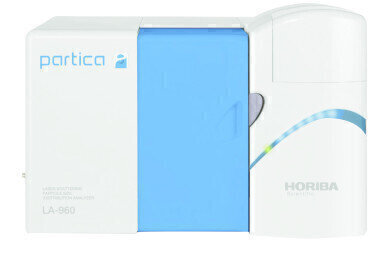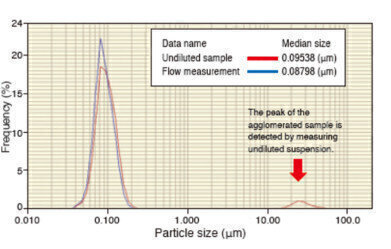Laboratory Products
Laser diffraction technology: An innovative cell for "undiluted" measurements of concentrated samples
Apr 03 2019
Laser diffraction technologies are known as accurate and fast technologies to characterise the size distribution of sample from few tens of nm to several thousand of µm, for emulsions, suspensions or powders. In this technology, particles should scatter individually light and distance between particles should be sufficient to prevent multiscattering regimes.
For wet dispersions, due to this method principle, we generally need to dilute samples strongly as soon as concentration is high.
HORIBA launches a new cell for the LA960 particle size analyser dedicated to any analysis of «concentrated samples with low viscosity".
This cell, composed of two windows, positioned on a cell holder integrates a spacer, with variable thickness (selectable by user), to adjust the distance between these two windows.
Samples concentrated with low viscosity are introduced in this new cell type by using a syringe. When filled up, cell is placed inside its holder and recognised automatically by the laser diffraction device to start runs.
This unique concept, of windows and spacer with variable thicknesses, allows to adjust the optical path travelled by light source and thus, controls, reduces or avoids dilutions requested from samples highly concentrated.
For applications such as inks, emulsions or pigment suspensions, it is requested by users to avoid dilutions as these dilutions may modify/change the sample formulation and / or underestimate the presence of agglomerates.
Here below an example of results for suspensions used for battery electrodes manufacture.
With a standard circulation cell, dilution is compulsory, and the aggregates are not detected, as statistically not taken during sampling.
With the use of the high concentration cell, no dilution is applied, and the aggregates are then analysed properly. This new cell allows to work 4000 times more concentrated than with classical circulation wet cells. More representative samples can de definitively analysed in such conditions and avoid sampling errors.
This example shows the interest of using such cell for better detection capabilities and full sample integrity.
Digital Edition
ILM 49.5 July
July 2024
Chromatography Articles - Understanding PFAS: Analysis and Implications Mass Spectrometry & Spectroscopy Articles - MS detection of Alzheimer’s blood-based biomarkers LIMS - Essent...
View all digital editions
Events
Jul 28 2024 San Diego, CA USA
Jul 30 2024 Jakarta, Indonesia
Jul 31 2024 Chengdu, China
ACS National Meeting - Fall 2024
Aug 18 2024 Denver, CO, USA
Aug 25 2024 Copenhagen, Denmark


-(1)-(1).jpg)


24_06.jpg)













